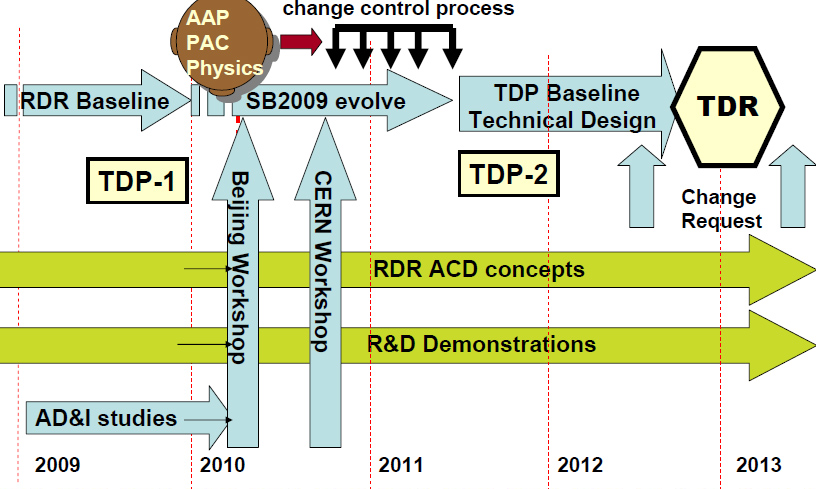Director's Corner
27 May 2010
 Barry Barish |
Baseline Assessment Workshops
Over the past months we have developed a process for assessing the major changes to the ILC baseline that were proposed last year. The motivation for the proposed changes is to evolve the ILC design to better optimise cost to performance to risk, with special emphasis on cost savings that will help insure that we keep control over the cost. All this will lead to the Technical Design Report (TDR) at the end of 2012. The centrepiece of the assessment process will be two four-day Baseline Assessment Workshops (BAW). The first BAW will be held at KEK from 7-10 September 2010, and the second at SLAC from 18-21 January 2011. I am very much encouraging active participation from the detector community and by some of our advisory committee members both in the preparations leading up to these workshops and at the workshops, themselves.
Making major changes to the baseline that was carefully created for and documented in our Reference Design Report (RDR) is not at all straightforward, since some of the changes could impact science capabilities or create technical risks. Therefore, we are again taking a systematic approach for each major change, by first getting very broad inputs in order to identify issues and study them in detail, then bringing the information together at Baseline Assessment Workshops to assess whether to recommend each change, and finally making recommendations to a formal change evaluation process that will be chaired by me.
 Top level change control process for assessing baseline changes for the TDR Top level change control process for assessing baseline changes for the TDR |
 The overall timeline and plan for developing the ILC TDR showing how the baseline change process fits in. The overall timeline and plan for developing the ILC TDR showing how the baseline change process fits in. |
The First Baseline Assessment Workshops (BAW-1) in September will focus for two days on the 'Single-tunnel high-level radiofrequency (RF) systems' and then for a second two days on the 'Accelerating gradient'. Both of these topics involve technical choices that could have significant impact on the ILC configuration, and therefore need detailed understanding of the risks and cost implications.
The important technical subjects for discussions for the single-tunnel high-level RF workshop are different for each of the two proposed schemes. I will describe each of these proposed high-level RF systems in more detail in separate columns before the September BAW workshops. However, for the klystron cluster system (KCS), proposed for flat deep sites with vertical access, subjects have already been identified for BAW-1 that include systems tolerances on RF amplitude and phase within a cluster, and the operational margin of RF power, including tuning and control strategy. For the distributed RF system (DRFS), proposed for mountainous sites with horizontal access, subjects for the BAW have also already been identified including assembly, sorting and installation strategies and the tolerances, as well as the need to define the R&D required in the technical design phase, including radiation shielding.
The last two days of BAW-1 in September will focus on the baseline choice for the accelerating gradient and the strategy towards future gradient improvements. This subject involves questions of material and fabrication, surface processes, instrumentation and repair; developing a strategy to overcome quenches, and field emission; and improving the gradient and yield. The accelerating gradient determines the 'footprint' (or length) of the ILC and clearly affects the cost. The gradient choice will involve factors like the expectation for the production yield for accelerating cavities, the acceptable gradient spread, specifications for the gradient, the quality factor Q0, and cryogenic-load (limited by emitted radiation). We also need to determine the strategy for tuning and control, including tolerances and availability margin, and finally we must understand the impact on other accelerator systems, including conventional facilities, RF and cryogenics.
The goal for the BAWs will be to provide the information and a recommendation that will enable an informed formal evaluation and decision. The second BAW will be held at SLAC in January and will involve the changes that have possible physics performance issues. I will discuss BAW-2 in a future column. Some physics performance issues are under study through simulations by a special physics group, and some possible mitigating changes in the accelerator design are also under discussion. We are hopeful that these studies, followed by the January workshop will enable us to make informed final decisions that will be supported by the entire ILC community.
-- Barry Barish